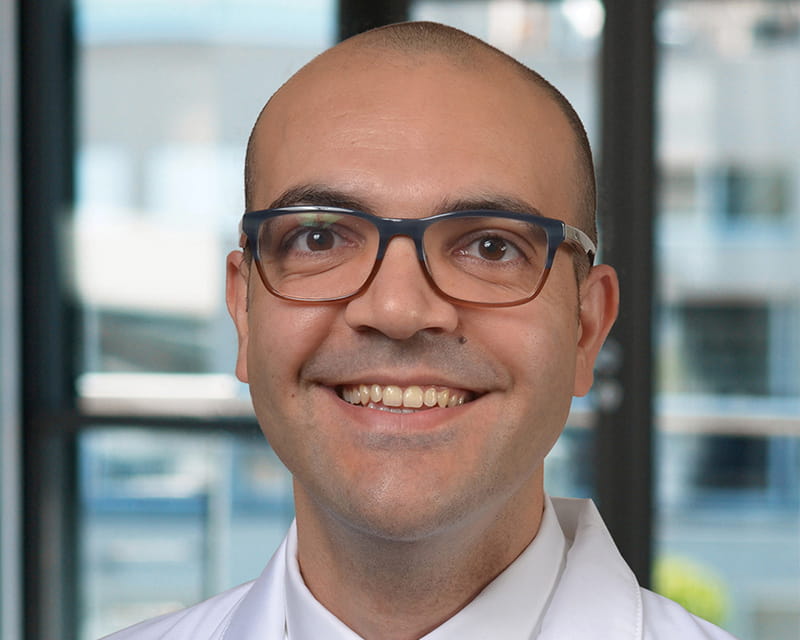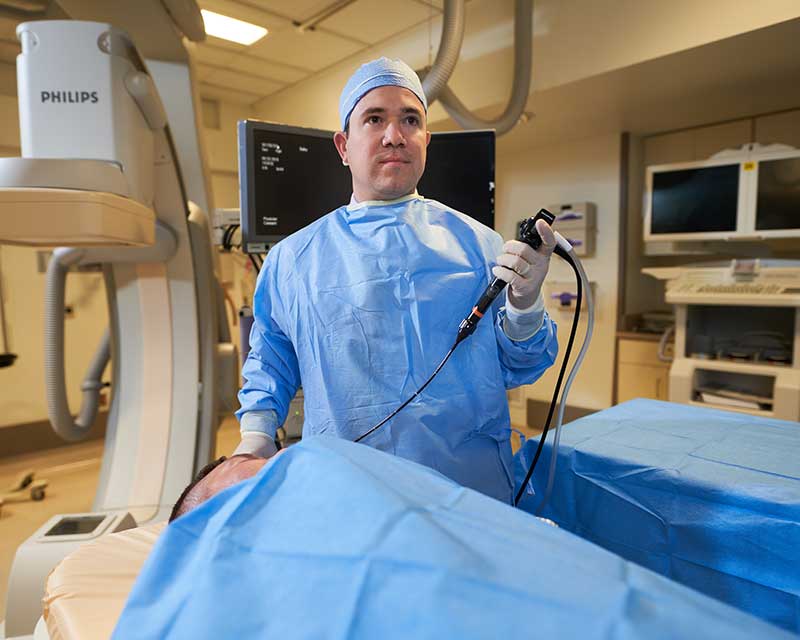
The Ohio State University Wexner Medical Center expands treatment options for patients with COPD
 Addition of three interventional pulmonologists makes Ohio State’s program one of the nation’s largest
Addition of three interventional pulmonologists makes Ohio State’s program one of the nation’s largest More than a decade after launching one of the country’s first interventional pulmonology programs, The Ohio State University Wexner Medical Center continues to push the field forward by participating in novel research and adopting emerging techniques.
And with the recent addition of three full-time physicians who are all fellowship-trained and board certified in interventional pulmonology, Ohio State has made it easier for pulmonary disease patients to access minimally invasive diagnostic and therapeutic services.
The dawn of interventional pulmonology as a subspecialty coincided with an explosion in lung cancer cases in the late 1990s. Physicians and scientists facing an epidemic began developing safer and simpler ways to biopsy lung nodules, debulk airway tumors and drain pleural fluid.
Twenty years later, interventional pulmonology has not only revolutionized lung cancer management. It has also become an established branch of pulmonary medicine with accredited fellowship training programs and a distinct board certification exam.
“Ohio State recognized the potential of these new techniques early on, and established its interventional pulmonology program in 2005,” says Harsh Shah, MD, director of interventional pulmonology in Ohio State’s Division of Pulmonary, Critical Care and Sleep Medicine, and program director of the Interventional Pulmonology Fellowship Program.
“We were among the first to offer endobronchial ultrasound, which allows us to biopsy, diagnose and stage lung cancer all in one procedure,” Dr. Shah says. “And today, we continue to offer the latest interventional devices and techniques, either as early adopters of innovations or by testing them through clinical trials.”
Specialists in Ohio State’s interventional pulmonology program diagnose and treat patients with complex airway disorders, lung cancer and pleural diseases. Services include:
“Interventional pulmonary treatments help us provide patients the most benefit with the least amount of procedures,” Dr. Shah says. “During a single, image-guided bronchoscopy we can collect tissue samples from the lung and lymph nodes, remove a pleural effusion or remove part of a tumor blocking the airway. We can simultaneously diagnose and improve quality of life.”
In the next year, Ohio State’s interventional pulmonology team plans to offer new, Food and Drug Administration-approved endobronchial valves for people with severe emphysema. Results of the landmark LIBERATE trial showed that patients with the valve could breathe easier and were more active, compared to patients who received medical management alone.
“Until now, patients with severe emphysema had few treatment options outside of major surgeries like lung transplant,” Dr. Shah says. “We’ll be able to place these valves in airways through bronchoscopes, where they will occlude the diseased part of the lung and reduce hyperinflation.”
The interventional pulmonary team is also participating in research studies to improve patient care and physician training. Their efforts include a multicenter, randomized controlled trial related to drainage of pleural effusion, and a study to examine the learning curve for interventional pulmonology fellows undergoing navigational bronchoscopy training.
“Two decades worth of discoveries have transformed how we diagnose patients, but they also offer significant therapeutic benefits,” Dr. Shah says. “We can give patients their breath back, which gives them their energy back, which helps them tolerate the chemotherapy and radiation treatments that may ultimately extend their lives.”
Learn more about innovations in care and research from the Division of Pulmonary, Critical Care and Sleep Medicine.